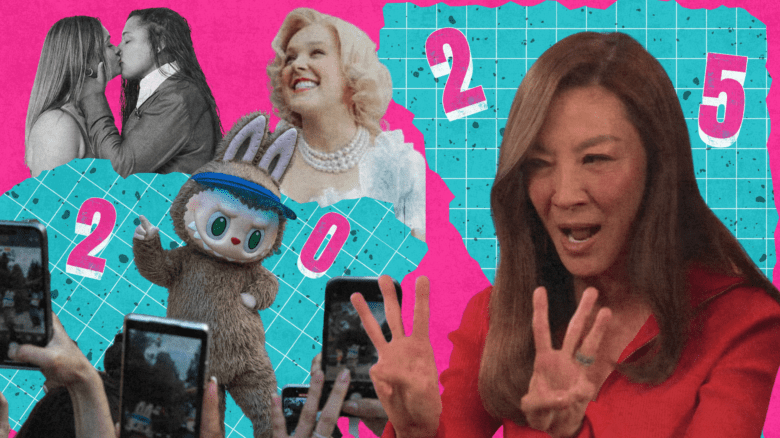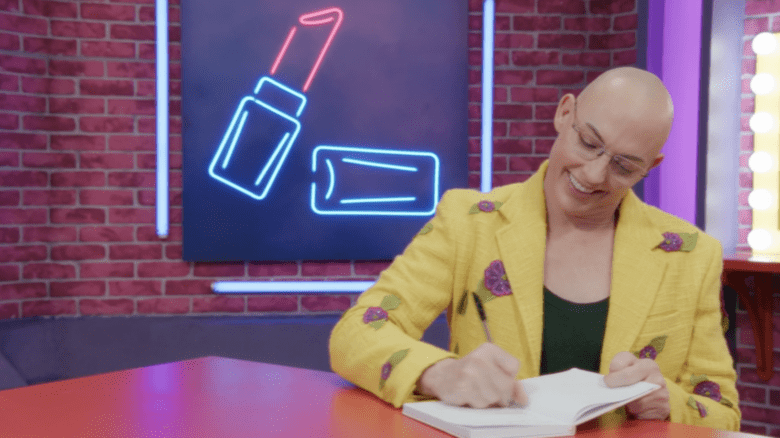All my writing life, I’ve been a very “write what you know” kind of writer. That’s not to say that what I write is a direct expression of personal experiences, but I have a strong tendency to draw on familiar environments and communities and to write from the perspective of characters that are physically very close to my own being (they’re almost all Japanese Canadian and chubby).
Maybe it’s for this reason that, when I read fiction, I have a habit of creating a mental portrait of the author. Not that I think the author will be the spitting image of the character they’ve created. As Evan Munday, illustrator of Stripmalling (written by Jon Paul Fiorentino), recently pointed out at a Scream Literary Festival event, the artist and reality are rarely mirror images of each other. Cartoon artists especially have a tendency to make themselves a little bit cuter or sexier. Comics know-it-all and writer Scott McCloud is just a wee bit older in real life than his boyish self-portrait icon. Alison Bechdel is far cuter than she draws herself.
But overall, you know, I typically expect some sort of physical connection between author and character. Even though I recognize the realities and the possibilities that are inherent in the art of writing, and even though I depend, to some degree, on this flexibility and opportunity, I’m still consistently and slightly surprised when I find out writing about or from the point of view of boys has been written by a woman and vice-versa. There’s nothing wrong with these works, clearly — don’t get me wrong. I’m just saying it surprises me, especially when I meet these authors face-to-face. I become this vaguely sexist/genderist being, expecting one thing and getting another. There may be some who respect me a little less for knowing this — c’est la vie.
I bring all of this up because of an experience I had at a London literary Pride event this past July, where I had the opportunity to read with author Pat Brown. The majority of Brown’s writing — which includes LA Heat, LA Mischief, LA Boneyard, Man’s Best Friend and The Geography of Murder — falls into the category of mystery crime fiction. Her narrators and main characters are almost exclusively queer and male, muscular, burly, tough cops being a mainstay. So when Brown, a petite blonde who looks something like my sprightly, Grade 10 band teacher, took the stage to read I was like, “Wow.”
“Wow” for more than one reason. Brown is a seasoned pro at standing in front of a mic with a book, and her reading flowed like a slick episode of CSI. Brown softly growled out the dialogue of her characters, including the LAPD cop David Eric Lane and The Geography of Murder’s 22-year-old Jason Zachary, who wakes up in bed at the beginning of the book with a collared and leather-harnessed, otherwise naked, corpse. After the reading, I had a chance to follow up with Brown to ask her about her writing. I wondered how she connected to these characters, and what inspired her to write these particular stories. As it turns out, Brown’s inspiration is as much the genre and the setting of her works as it is her characters. A mainstay of Brown’s work is a reflection of her fascination not only with detective work but also with her love of (former home) Los Angeles.
***
Mariko Tamaki: How would you describe yourself as a writer? What genre do you place yourself in?
Pat Brown: I see myself more as a crime fiction novelist who leans toward the darker genre — police procedural, thrillers. Occasionally, I break out and write something frothier, like the romance that just came out, Man’s Best Friend and the upcoming Lynx Woods, but most of my work is a darker, grittier look at urban city life. Mostly Los Angeles because few places in North America are quite as gritty as it is.
Tamaki: It says on your website that you’re a writer of GLBT fiction. How do you define yourself?
Brown: I’ve usually defined myself as bi, but in actual fact I’d have to say I’m asexual right now. I haven’t been with anyone, even on a “date,” in nearly 20 years. So I’m downright monastic.
Tamaki: Where do you find your inspiration to write what you do? I’m imagining it comes from a variety of sources including other writers, film and television, but I wondered if you could give us a feel of what you draw on and where you draw from in creating your characters.
Brown: I read papers like the LA Times and the New York times to keep up on news in the US (since most of my stories take place there). I read almost nothing but crime fiction books with research books I’ve picked up over the years on police procedure, gangs and forensics. But the truth is, you never know where an idea will come from.
A lot of times I will say inspiration comes from reading a mystery and wondering what would have happened if this had been done instead of that, or this was the bad guy, not the one who turned out to be the killer. Small plot changes can dramatically change a book.
Los Angeles fascinates me. Some people say I’m obsessed with it, and there may be some truth to that. But I find it an endless source of great drama and comedy and the settings are unique in North America. Where else can you find the glitter of Beverly Hills, Bel Air, the myth of Hollywood (trust me, not as glamorous as people think)… and places like Watts, Compton, Rampart, South Central where the riots in ’92 started and nearly burned the city down. The LAPD fascinates me too: maligned, seriously understaffed (they have the smallest police force per capita of any major city in the world), often seen as violent, bigoted bullies with guns (sometimes it’s true, sometimes it’s media distortion). What’s not to write about? The stories are all over the place.
Tamaki: I was reading your blog and noticed that you often write up interviews with your characters — these detailed scenes in which you actually visit the characters where they live and interact with them. They’re great! It’s a novel way to discuss and interact with your work. When did you start doing that? Is that a method you use in your writing?
Brown: The character interviews have always come after the book. I used to draw up character charts and do ‘bios’ but lately I’ve been taking a more holistic approach. I visualize a character, meet him and get to know him as I go along the journey of writing about him or her. Much like you would meet real people. You find out about people by being around them, hearing them speak, telling their “stories.” I do this and in some ways I think my characters are richer now than they were when I first started writing novels. Maybe that’s just maturity as a writer, but I have found I’ve changed the way I write over the last couple of years.
I lived in Los Angeles for eight years and met a host of people who have filled my books in one form or another. Street people, hustlers, pimps, wannabes who just stepped off the bus all dreamy eyed about being the next big one — and thousands of those come every year. In LA, no one is a waiter, or a car hop, or a sales clerk, they’re all just waiting for someone to “discover” them and make them rich and famous. I’ve met killers and their victims, trigger-happy cops and managed to get to a couple of Hollywood type parties. I was in LA when AIDS first showed up and had a lot of friends die — the whole thing was so secretive back then that most of them just disappeared and nothing but street rumours told you what happened to them. It was a terrible time.
I came out of it with my own little gift. I was diagnosed HIV-positive in ’91. I nearly died of it in 2007. Whether or not that enriches my work, I don’t know. It’s certainly made my life richer — facing death can give you a whole other way of looking at life.
***
If there’s an overall lesson in all this, it’s probably something to do with the idea that writing is a craft full of possibilities. On her website, Brown credits writing as a salvation — a conduit for the voices of her characters, voices she hears (Margaret Laurence and Anne Rice said the same things about their characters), voices that would have no life, or meaning I suppose, if they weren’t channeled onto the pages of Brown’s books. In as much as writing serves as a means to bring to light a wide swath of stories that illuminate a variety of cultural and communal realities, it also (you’ll have to get someone with an MA in English lit to verify this) to expose the possibilities inherent in the human imagination and its ability to dream up unlived realities, voices, stories and mysteries.
Pat Brown is currently working on a bunch of new works, including a sequel to the recently released Geography of Murder, starring tough cop (and BDSM dude) Alexander Spider, titled Forest of Corpses. I would highly recommend you check out her website, which links to information on her work, as well as other writers of the genre.
 Why you can trust Xtra
Why you can trust Xtra


